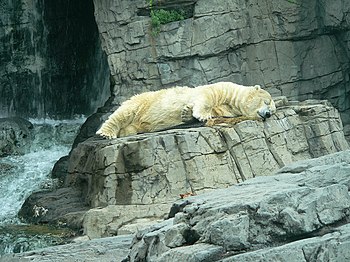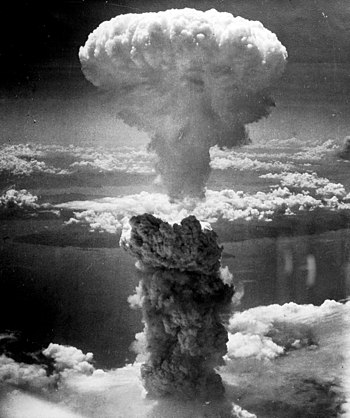
A peacock escaped from the Central Park Zoo and wandered around the city. Either that or I just saw a pigeon on his way to a gay pride parade.
| Polar Bear catching z's at the Central Park Zoo, Manhattan, USA (Photo credit: Wikipedia) |
Manhattan Zoo
The Sunset Zoo in Manhattan, Kansas is not bad for a smaller sized town. The 26 acre park has over 300 animals representing over 100 different species as well as themed gardens and a number of events scheduled throughout the year. Over 100,000 visitors come to the zoo each year. The zoological park has been a popular attraction in Manhattan since the 1930's. A low admission price encourages visitors to frequent the park.
But the real zoological attraction for this post is the much more well known menagerie that can be found in Central Park in middle-upper Manhattan. The Central Park Zoo which is contained in an area of a mere 6.5 acres is far smaller than the Sunset Zoo in Manhattan, Kansas. Yet though less than a quarter the size of the Midwestern zoo, the East Coast Manhattan zoo receives ten times the yearly visitors. The zoo in Central Park also costs over three times as much to gain entrance. Though the collection of animals is diverse, many of the larger animals found in zoos with more space won't be found at this zoo. Still you can expect to find some bears, wildcats, monkeys, and an array of smaller mammals, birds, reptiles, and insects.
Manhattan's Central Park zoo was the first official zoo in New York City having been founded in the early 1860's. After the Philadelphia zoo, it was the second publicly owned zoo in the United States. Now the Central Park Zoo is part of a system of four New York City area zoos.
Personally, I have never been to any of the New York City Zoos, but I have been to a number of zoos throughout the United States. To read more about the zoos I have visited please visit my "Z" post at Wrote By Rote.
And so we come to the end of my A to Z Manhattan Project series. I hope you've enjoyed reading these posts. Don't forget to come back to this blog tomorrow, May 1st, for a special surprise version of Battle of the Bands. Remember--Manhattan covers a lot of ground though not necessarily in land area.
My A to Z Reflections Post will be on Monday May 9th.
Have you been to the Central Park Zoo or any of the New York City Zoos? Have you been to the Sunset Zoo in Manhattan, Kansas? What are some of your thoughts on zoos?


















